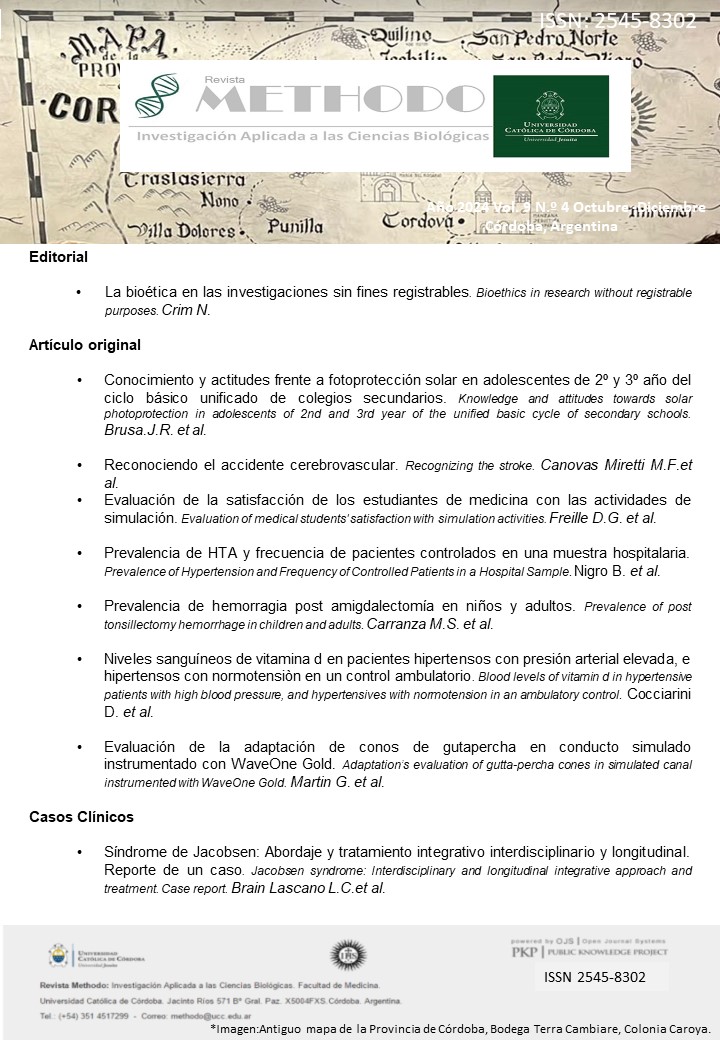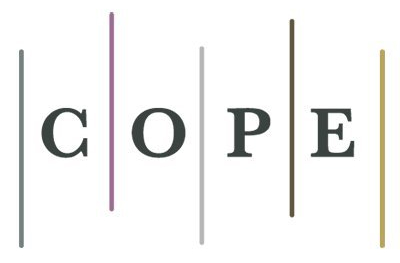Recognizing the stroke
DOI:
https://doi.org/10.22529/me.2024.9(4)03Keywords:
Acute cerebrovascular accident, risk factors, warning symptomsAbstract
INTRODUCTION: Cerebrovascular accident (CVA) is a pathology of sudden presentation, which requires immediate medical attention to avoid mortality and reduce the patient's disability. Ischemic events predominate in Argentina, accounting for between 85% and 87% of cases, and between 13% and 15% are hemorrhagic. The incidence rates of cerebrovascular disease vary in each country. The World Health Organization estimates that every 5 seconds a stroke occurs in the world population. Early recognition of symptoms is fundamental to being able to provide care and timely treatment, since reperfusion therapies are time dependent. This is why education, both for the patient and their relatives, as well as for the health providers in charge of initial care, is essential.
OBJECTIVES: To identify the degree of knowledge of patients who attend the Reina Fabiola University Clinic about acute cerebrovascular pathology and its alarm symptoms.
MATERIALS AND METHODS: Prospective, observational and analytical survey-type study in which patients between 18 and 90 years old, who attended the Reina Fabiola University Clinic (CURF), were evaluated from September 2022 to October of the respective year. The data was obtained from closed surveys that were prepared through the digital tool “Google Forms”. It was offered voluntarily, free and anonymously, through an access link or QR code, on the CURF's digital media platforms, in on-call waiting rooms and external offices of the institution. The following variables were analyzed: age, sex, educational level, tobacco consumption, comorbidities, development of physical activity, ability to recognize the symptoms of acute cerebrovascular pathology, knowledge about the frequency of the pathology, knowledge about acute and preventive therapeutic alternatives. For quantitative variables, measures of centralization and dispersion (mean and standard deviation) were calculated, and for categorical variables, absolute and percentage distributions were calculated. The Chi square test was applied in the evaluation of categorical variables.
RESULTS: The sample consisted of 701 patients (533 women and 168 men). Two hundred and eighty-seven (41%) were people whose age was in the range of 41 to 65 years. Five hundred five (72%) of the patients considered that stroke is a common pathology. Of those who stated that it was a frequent event, the majority were people whose age range was between 41-65 years. Only 35 (5%) jointly considered loss of strength and sensitivity, vision disorder, difficulty in speaking and vertigo as possible symptoms of stroke. Four hundred and thirteen (59%) of those surveyed stated that they were aware of the existence of a "time-dependent" treatment; 463 (66%) reported that said time is less than 4.5 hours.
CONCLUSION: This study showed that most of the people surveyed recognize the high frequency of stroke. More than half of this sample is aware of the timing of the implementation of adequate therapy and the importance of consultation within 4.5 hours of the onset of symptoms. The percentage of people who correctly recognized the alarm symptoms was only 5%. These results may not be generalizable to the entire Argentine population because the institution where it was carried out mostly has a high educational level and a middle social class.
Published
How to Cite
Issue
Section
License
Copyright (c) 2024 Methodo Investigación Aplicada a las Ciencias Biológicas

This work is licensed under a Creative Commons Attribution-NonCommercial-ShareAlike 4.0 International License.




















